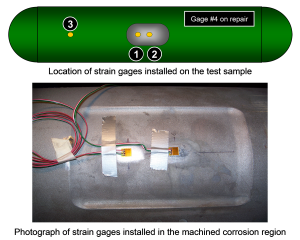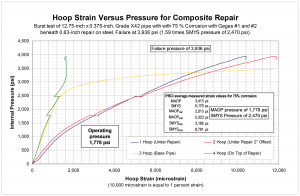March 2013, Vol. 240, No. 3
Features
Elements Of An Engineering-Based Integrity Management Program

Establishing pipeline integrity requires identifying specific threats, understanding their relationship to the condition of the pipeline, and establishing what mitigative measures are appropriate to assure integrity. The pipeline industry has relied on many years of research and experience to develop a set of tools to perform qualitative analyses of pipeline integrity. With the implementation of the Integrity Management Program (IMP) by the Pipeline and Hazardous Material Safety Administration (PHMSA), the analysis methods and results must be defendable and documented.
This article discusses how existing knowledge, analytical techniques, along with testing and engineering rigor, can be combined to develop a systematic method for assessing damage to pipelines. At the heart of this effort is the development of field-friendly tools that permit operators to quickly respond to any threat once it has been identified.
To assist industry in this effort, Stress Engineering Services, Inc. has developed what we call the Engineering-Based Integrity Management Program (EB-IMP). The backbone of this initiative is the API 579 Fitness for Service document; however, Stress has gone beyond the traditional API 579 three-level assessment process to develop two additional steps that include assessment by experimental methods and development of repair techniques.

The EB-IMP methodology is an outgrowth of our work for pipeline companies over the past 15 years in evaluating anomalies that include dents and mechanical damage using finite element analysis and full-scale testing. Additionally, Stress has led industry’s charge to evaluate composite repair technology for pipelines. This repair technology serves as the foundation for the EB-IMP’s Level 5 repair assessment.
Figure 1 shows the fundamental elements of the EB-IMP process based on the three following activities:
• Identify the integrity concern
• Develop engineering-based solutions
• Remediate the pipeline if required
Although a significant body of pipeline research data is available, the challenge that exists for industry is to put this in a format that can be deployed for making integrity management decisions. There are also times when research data does not exist for a specific anomaly and pipeline companies must fill in the gaps by conducting their own studies that employ either analysis or experimental methods.

Provided below is a brief description on each of the five EB-IMP assessment levels.
Level I Analysis – Basic
The Level I effort involves the most basic form of an analysis that is possible. Typically, this includes performing an assessment based on consensus-based codes or standards (e.g. referencing the original construction codes such as ASME B31.8 for gas pipelines and ASME B31.4 for liquid pipelines).
Level II Analysis – Detailed
The analysis efforts associated with a Level II analysis require more detailed information than for a Level I assessment. The efforts involved in this phase are more complicated and the results are less conservative than those calculated using Level I methods and typically include calculations based on closed-form solutions such as those contained in API 579 or other engineering resources. This work is typically performed by an engineer experienced in pipeline design and operation.
Level III Analysis – Numerical (Finite Element Analysis)
When the Level I and II analyses indicate that either the operating pressure must be re-rated or that a repair is necessary, it is appropriate to perform a Level III assessment. Numerical methods such as finite element analysis are the basis for a typical Level III assessment. The level of rigor associated with this effort is significant when compared to calculations completed as part of either a Level I or Level II assessment, although the reward for completing a Level III analysis is a reduction in the safety margin associated with the previous two levels and a greater understanding about the actual load capacity of the pipeline or component.
Level IV – Testing
The results of the engineering and FEA analyses can be confirmed via a testing program. Testing can involve either pipe material removed from service or pristine pipe, depending on the desired outcome of the study. For example, if a pipeline company is interested in the performance of vintage girth welds subject to cyclic pressure service, it would be prudent to remove girth welds from the field and test them. The testing approach for evaluating mechanical integrity is extremely powerful and provides pipeline operators with a means for quantifying integrity concerns not possible using the assessments per Levels I, II, or III.
Level V – Repair Solution Design
Remediation of common integrity threats can be accomplished using accepted repair procedures and these methods are, for the most part, well-suited and conservative. The Level V approach is used to develop a repair procedure to meet the specific needs of the situation. These tailored-repair solutions offer safe, cost-effective solutions in lieu of the one-size-fits all cut-out method of repair. The design for the repair is typically evaluated using experimental methods although the repair can also be modeled using numerical methods such as FEA to evaluate suitability.

Two examples of the EB-IMP initiative are included in this article. The first details an assessment where the severity of a dent in a liquid pipeline was quantified using data from an inline inspection tool. The second example includes results from a testing program used to evaluate the ability of a composite repair system to restore integrity to a high pressure transmission pipeline having corrosion up to 75% of the pipe’s nominal wall thickness.
Example #1 – Dent Damage Assessment
Inline inspection (ILI) tools collect geometry data on dented pipelines that can be used to build FEA models to calculate local stresses. Using these stresses, an integrity assessment is made by evaluating loading such as cyclic pressures the pipeline in question. In this example, ILI geometry data were collected on a dented pipeline and stresses in the dent were calculated (Figure 2). For this particular pipeline, the resulting dent stress concentration factor was 3.58. Using actual pressure history data from the pipeline, Stress estimated the remaining life of this pipeline to be 55 years.
Example #2 – Composite Repair Assessment
Composite materials are routinely used to repair damaged pipelines. One of the greatest challenges to composite repair systems is restoring the integrity to pipelines subjected to frequent pressure cycles having significant levels of corrosion (e.g. on the order of 75% of the pipe’s nominal wall thickness). Stress performed testing on an E-glass/epoxy system used to repair a 12.75-inch x 0.375-inch, Grade X42 pipe having a corrosion depth of 75%. Two tests were performed that included a burst test and a pressure cycle test. Figure 3 shows the test set-up while Figure 4 plots the strains recorded during pressure testing.
The strains beneath the repair were within acceptable levels and the failure occurred outside of the repaired region. Additionally, the cyclic pressure sample was cycled between 36-72% SMYS and failed after 260,000 cycled had been applied. These test results clearly demonstrate that this particular repair could meet the integrity requirements of a pipeline having significant corrosion that was subjected to an aggressive cyclic pressure condition.
Stress has used the EB-IMP process to assist more than 10 transmission pipeline companies over the past two years. The methods we employ are based on fundamental engineering techniques that have been used by pipeline professionals for many years. The uniqueness of Stress’ approach is the integration of actual pipeline data, coupled with analysis and testing efforts, to generate a tailor-suited engineering-based process that addresses specific threats to pipeline integrity.
The result of this effort is that the EB-IMP process can address single critical integrity threats, or the process can be used to develop a general-purpose tool to address a range of threats found at several locations across a pipeline system.
Author
Chris Alexander is a Principal at Stress Engineering Services, Inc. in Houston. He has been integrally involved in assessing the effects of dents and mechanical damage on the structural integrity of onshore and offshore pipelines using numerical modeling and full-scale burst and pressure cycle testing. He has also been extensively involved in evaluating the use of composite materials in repairing pipelines and offshore risers. He has authored more than 100 technical papers and made presentations internationally on a wide range of subjects. He has received B.S., M.S., and Ph.D. degrees in Mechanical Engineering from Texas A&M University and is a licensed Professional Engineer in the state of Texas.





Comments